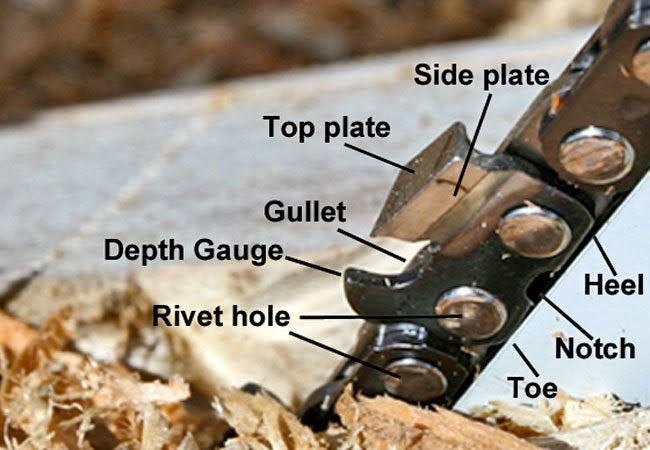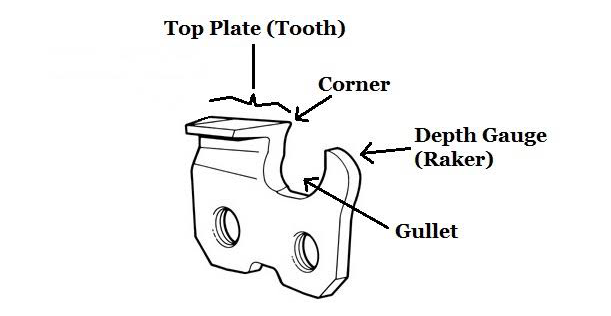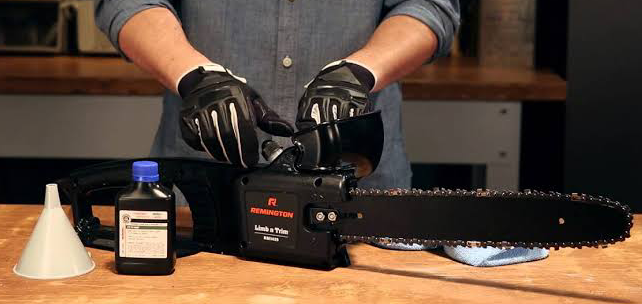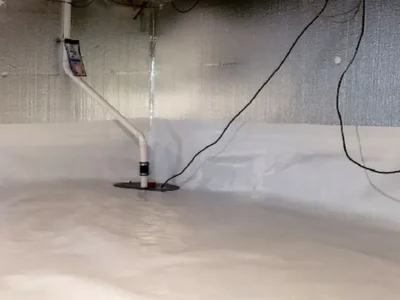A powerful chainsaw used for tree felling, limbing, bucking, or simply trimming branches is an efficient and helpful tool. The chainsaw that cuts through wood is so sharp that the blade retains its severity for almost three hours after use.
So, you must exercise caution while operating a chainsaw. However, using a chainsaw with blunt edges is even more dangerous since it would take added time to complete the task and may injure you in the process.
To determine the right time to sharpen your chainsaw blade, learn how to tighten a chainsaw chain & check if the saw pulls to one side while cutting and if you have used the same chain for several years.
Older chains cause rough cutting and deteriorate faster, so it is best to buy a couple of spare chains and switch them occasionally to prolong the life of your saw and avoid wearing out one chain entirely.
Sharpening a Chainsaw Blade

Tools required to sharpen a chainsaw blade include a file guide, flat and round file, screwdriver, mineral spirits, stump vise, depth gauge guide, Dremel tool kit, and safety gear, including work gloves and glasses.
Prolong the life of a chainsaw by maintaining it regularly and sharpening the blade by placing it on a tabletop, tightening the chain, and using an aligned file to sharpen it. Here are detailed steps to help you sharpen a chainsaw blade:
Stage 1: Set the File

- Clamp the chainsaw bar to a work surface to secure its position and guarantee consistent sharpening. You can turn the chainsaw upside down to access the chain easily.
- Tighten the tension screw adjustment (which is mostly found perpendicular to the chain) to secure the equipment further and avoid mishaps.
- Select a tooth that you want to sharpen and mark it to help you track different parts and prevent working on the same section twice.
- Select a round file that matches the diameter of the chainsaw teeth. If you are unsure of the dimensions, look at the bar where the size is usually printed.
- Place your file in the notch and angle the cutter. Focus on one direction before moving to alternate sides.
- Set your file guide to a default angle so that it correctly lines up in a parallel position while filing the rest of the chain.
Stage 2: Refine the Cutter

- Slide the file across the cutter face smoothly without applying too much pressure.
- Slowly lift the file and repeat the procedure at least ten times till you see a sharp edge.
- Similarly, sharpen every tooth. Alternate the left and right cutters to ensure the chainsaw cuts consistently afterward.
- Rotate the chainsaw 180 degrees and clamp it again to access alternate cutters.
- Apply the same low-pressure motion to sharpen every tooth.
Stage 3: Pack the Rakers

- Set the depth gauge to check if the bumpy rakers are adequately filled and compatible in height to promote smooth chain spinning.
- Run a flat file to level the raker with the depth gauge. This will protect other teeth from being filed accidentally and lead to instability.
- Continue the process and loosen any metal shavings that may have been caught in the filer.
- Loosen the clamp to release the chain and saw. Do a final check to ensure you have worked on all edges.
- Turn the chainsaw to find the reservoir, unscrew the cap, and refill the oil. Secure the cap tightly and clean the chainsaw to remove oily remnants and other debris.
Voila! Your chainsaw is now sharpened and ready to use.
Maintenance of the Blade

Take a look at your user’s manual to understand how regularly you need to maintain a particular model of chainsaw. Here are some basic steps to perform at routine intervals:
- Examine the chain and motor. Add adequate oil whenever necessary.
- Also, monitor the oil quantity in the reservoir regularly.
- Inspect the guide bar that might get bent or twisted with overuse.
- Even if you use the chainsaw infrequently, ensure optimal functioning by lubricating the bar and chain using petroleum-based oil.
Additionally, after every use, check and align the depth gauges to clean debris and grease chains thoroughly.
[Tip: soak the chain in oil overnight].Then, store the clean and sharpened chainsaw in a grease-coated container.
Final Thoughts
With prolonged use, the chainsaw blades may become blunt or cut in odd ways than expected. In addition to routine inspection and upkeep of different chainsaw parts, you must remember to sharpen the chain immediately if it was used to cut against stone rocks or if you observe black and burnt wood bits rather than sawdust and chips while cutting firewood.
Regular sharpening and maintenance of your chainsaw can prevent disasters and help you complete projects with efficiency and ease. Use appropriate sharpening supplies or buy kits according to your chainsaw model and brand.
Also, ensure to equip yourself with safety glasses, gloves, protective hearing aids, and other gear. Use the filing method that best suits your specific equipment and sharpen a chainsaw to ensure faster, smoother, and safer operation.
Frequently Asked Questions
When Exactly Should a Chainsaw Chain Be Replaced?
Suppose you notice signs of rusting or observe uneven cuts while the chainsaw blade overheats during cutting; it is time to replace the chain. If you find it sagging, learn how to tighten a chainsaw chain.
How Do You Prevent a Chainsaw Blade from Going Dull Frequently?
In addition to maintaining your equipment regularly, repair and replace parts that may get damaged by overuse and be mindful of steep angled cutting, specifically with sturdy wood types like hickory, black oak, and ironwood.
Be sure to check out these other posts for comprehensive guides and tips on maintaining your chainsaw and enhancing its performance:










Comments